Research trends in the area of business history: a bibliometric approach
Tendencias investigativas en el área de historia empresarial: una aproximación bibliométrica
Received: 2022, July 13
Accepted: 2023, March 3
Bermeo-Giraldo, M. C., Mosquera González, D., Moreno López, G. A., & Rodríguez Zavala, L. (2023). Research trends in the area of business history: a bibliometric approach. Revista CEA, 9(20), e2454. https://doi.org/10.22430/24223182.2454
Abstract
Business is considered a very important topic in the world today due to the uncertainty and multiple actors that make up the business environment and different markets. Although researchers’ interest in business history has grown in recent years, research trends in this field are still unclear. Therefore, the purpose of this study was to identify the research trends and developments in the field of business history through a bibliometric analysis of the scientific production indexed in Scopus between 1934 and 2022. The methodology included an analysis of bibliometric indicators (quality and quantity) and a study of the evolution and research trends in the field. For the selection of the documents, the guidelines of the PRISMA (Preferred Reporting Items for Systematic reviews and Meta-Analyses) methodology were followed. According to the results, there was a correlation between the quantity and quality (impact) indicators. For instance, the journals Business History, Business History Review, Management and Organizational History, Business History around the World, Enterprise and Society, and The Oxford Handbook of Business History; the countries United States, United Kingdom, Italy, Germany, Canada, Australia, France, and Spain; and the authors Jones G., Casson M., Colli A., and Toms S. were found to be the most representative and influential actors in the field of business history. Also, the most popular and current topics in the field were methodology and economic history, and organizational longevity, research methods, business groups, corporate history, narratives, entrepreneurship, and environmental history were among the currently emerging themes. Finally, based on the findings, a research agenda is proposed for this field of knowledge.
Keywords: bibliometrics, business history, economic history, research trends, organizational theory.
JEL classification: N00, N01.
Highlights
Resumen
En el mundo de hoy, se considera fundamental estudiar el área de los negocios, esto debido a la incertidumbre y a los múltiples actores que conforman el entorno empresarial y los diferentes mercados. En años recientes, el campo de la historia empresarial ha presentado un interés creciente por parte de los investigadores, pero aún no son claras las tendencias investigativas en esta área de conocimiento. El objetivo de este estudio consistió en identificar las tendencias y evolución investigativa en historia empresarial a partir de un estudio bibliométrico de la producción científica registrada en la base de datos Scopus. La metodología se basó en la realización de un análisis de indicadores bibliométricos de calidad y cantidad y en un estudio de evolución y tendencias sobre la producción científica registrada en Scopus en el periodo comprendido entre 1934 y 2022, donde la selección de los registros se llevó a cabo con base en los criterios de la metodología PRISMA (Preferred Reporting Items for Systematic reviews and Meta-Analyses). Los resultados señalaron que existía relación entre los indicadores bibliométricos de cantidad y calidad (impacto); así, las revistas: Bussinnes History, Business History Review, Management and organizational History, Business History around the World, Enterprise and Society, y The Oxford Handbook of business History; los países: Estados Unidos, Reino Unido, Italia, Alemania, Canadá, Australia, Francia y España; y, los autores: Jones G., Casson M, Colli A., y Toms S., se revelaron como los más representativos y con mayor impacto en el campo de la historia empresarial. Se concluye que los tópicos más utilizados y actuales son metodología e historia económica, y algunos de los términos emergentes son longevidad organizacional, métodos de investigación, grupos empresariales, historia corporativa, narrativas, emprendimiento e historia ambiental. Finalmente, el estudio propone una agenda de investigación sobre este campo de conocimiento.
Palabras clave: bibliometría, historia empresarial, historia económica, tendencia de la investigación, teoría de la organización.
Clasificación JEL: N00, N01.
Highlights
1. INTRODUCTION
Given the current global uncertainty and the multiple actors that make up the business environment, business is regarded as one of the most crucial topics in the world today (
Initially, studies in the field were particularly focused on the economic history of businesses and wealth accumulation. This is because, as noted by
Clearly, one of the major concerns among business historians has been the relationship between businesses and the government (
In Latin America, business history is a relatively young discipline (
Considering the significant economic and social changes that have occurred over time (e.g., the suppression of protectionism in most countries, the opening of trade borders, and the elimination of import substitution models), business history has become crucial for students and researchers in areas like economics and administration (
According to
Another aspect to take into account is the threat posed by the COVID-19 pandemic to companies and businesses, which, in turn, affected countries’ economic stability. In the post-pandemic period, researchers have attempted to measure such negative effects, which include harm to sales and to global economic growth (
In light of the above, this study aims to identify research trends and developments in the field of business history through a bibliometric analysis of the scientific output indexed in Scopus between 1934 and 2022. For this purpose, a two-stage analysis is conducted in this study. The first stage involves data collection, design of a search equation, selection of the database, and definition of the inclusion criteria based on the PRISMA (Preferred Reporting Items for Systematic reviews and Meta-Analyses) methodology. The second stage includes the application and analysis of bibliometric indicators (quantity, quality, and trends). Considering the changes that the world and consumers have experienced over time, this study’s findings would add to the existing body of knowledge while also making significant theoretical contributions to future research in the field. They will also be useful for managers and policy makers in the business world.
The rest of this paper is structured as follows. Section 2 provides a conceptualization and background information on business history. Section 3 describes the methodology used in this study following the PRISMA guidelines, as well as the bibliometric analysis that was conducted. Section 4 presents and discusses the results based on the estimated indicators. Finally, Section 5 outlines future lines of a research in the field and draws the conclusions from the study.
2. THEORETICAL FRAMEWORK
Business history is a discipline that examines the evolution of the economy, companies, business methods, and business-related government regulations over time. Additionally, it analyzes institutional, cultural, and social factors surrounding the business sector (
When examining the evolution of business history, it is imperative to talk about Alfred Chandler, one of the pioneers of economic history and corporate strategy. In fact, it is crucial to recognize the importance of the relationship between studies on a company’s growth and its success and the traditional economic models. This is because the analysis is centered on the individuals (or entrepreneurs) and how they have thrived in the economic system through the relationships, structures, transactions, and business contracts that they maintain as active participants in society (
In this regard, Chandler, by attempting to understand why large companies are successful, wrote three ground-breaking books that had a significant impact on the field. His first book entitled Strategy and Structure (published in 1962) details the emergence of a multidivisional organization (with a variety of economic activities). In addition, it explains how the great American industrial companies changed their strategies and organizational structures following World War II, including the well-known case studies of Du Pont, General Motors, Standard Oil of New Jersey, and Sears (
Around 1930, business historians turned their attention to the management of large organizations and the importance of concentrating their strategic management in the hands of senior executives. The following three aspects were key in this kind of executive management: (1) management was in charge of the production and distribution processes; (2) management exerted its authority and control over the lives of those below the corporate hierarchy; and (3) this type of management were the ones that imposed externalities on the market (
In the 1970s, economists proposed a new economic theory, which analyzed the performance of the market and the importance of the division of labor at the social and company levels, as suggested by Adam Smith’s concept of the “invisible hand” (collective benefits accrued unconsciously as a result of individual actions) (
In this context, it is also important to note Karl Marx’s criticism of the capitalist economy and wealth accumulation by senior executives, which surely add to the history of economy and its evolution. As his strongest argument, he emphasized the importance of comprehending society’s history, as well as society itself, and highlighted the labor performed by employees and laborers, who were poorly compensated (
From 1960 to 1980, economic history predominated in the field of business history. By the 1990s, this field changed to emphasize the concept of culture, and historians’ focus shifted away from entrepreneurs and resources (capital, labor, and technology) to cultural and social issues in the individual as a member of society (
All of the above, as well the theories about business history from the last decade of the 20th century, led to an increased interest in studying this field. In fact, scientific production on the matter has considerably increased in recent years, allowing for the study of new regions and periods while also diversifying the methodologies, economic sectors, and industries under analysis (
Methodologies employed in business history studies
In the field of business history, there are some clear distinctions between the goals and methodologies considered by historians. The vast majority of those interested in economic theory are found in business schools, and they are more concerned with the social and political aspects of businesses than they are with the historical methodologies used by their peers (
Despite the relevance of this subject, business used to be viewed by those more akin to historical methods as not quite important two decades ago. In the United States and other developed countries, for example, business history was not well embraced by universities’ history departments (
According to an article by
Some background on business history in Latin America
Given that business history has only recently been recognized as an emerging area in the field of historical studies—specifically since the middle of the 1970s and with a stronger emphasis in the 1980s—it is a relatively young discipline in the Latin American context (
Numerous studies have been conducted in Latin American countries as a result of the increased interest in the region’s economy. Since Latin America has historically experienced economic instability, learning from the experiences of other businesses makes it possible to adapt to the shifting social, economic, and policy structures and build capacities for the development of innovations and technological advancements (
In recent years, the subjects that have piqued the interest of researchers in the field of business history include large private companies, state companies, biographies of business leaders, relationships between business owners and the government, organizational culture, technological innovation, and lessons learned from experiences as study cases (
Furthermore, according to
3. METHODOLOGY
A bibliometric analysis of the scientific production on business history indexed in Scopus between 1934 and 2022 was conducted to identify research trends and developments in this field of research, which is the main purpose of this study. Bibliometrics is a method used to evaluate academic literature in a particular field of study based on the number of related publications (
Inclusion and exclusion criteria
As indicated by
Data sources
In this study, the articles listed in Scopus (retrieved in June 2022) served as the main data source for this bibliometric analysis on business history. Since Scopus meets the requirements for accessibility and citation count, it is one of the most frequently employed databases in this type of literature reviews (
Search strategy
A specialized search equation that considered the previously described inclusion criteria was designed to perform a search in Scopus from 1934 to July 2022. The following is the search equation that was used in Scopus: (TITLE ( {business history} ) OR TITLE ( {entrepreneurial history} ))
Data filtering and selection
The search strategy used in Scopus retrieved a total of 466 publications. Based on the defined exclusion criteria and using Microsoft Excel, the PRISMA Statement guidelines outlined in the study by
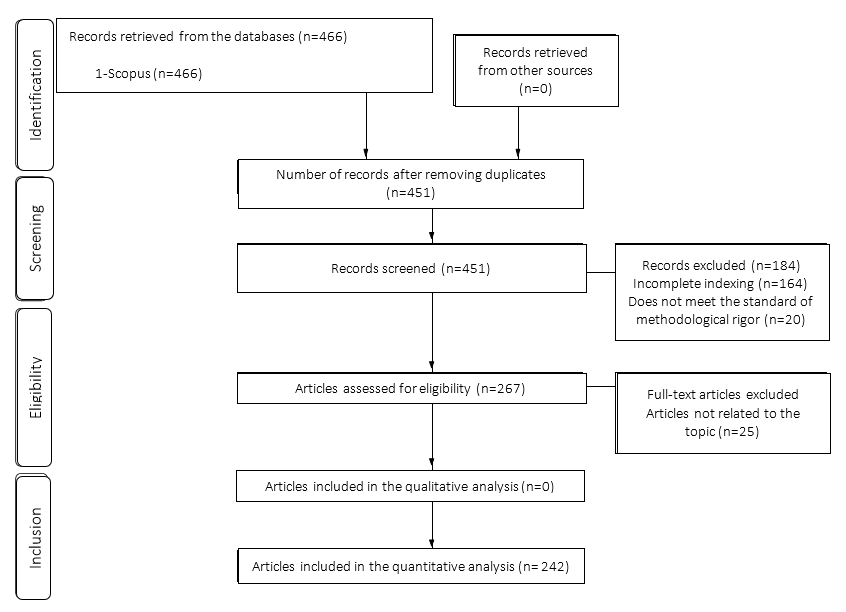
Figura 1. Diagrama de flujo para revisiones sistemáticas según PRISMA
Source: Authors’ own work based on (
Data processing
In this study, Microsoft Excel was employed to process and analyze the 242 selected records using quantity and quality indicators. Academic productivity or quantity indicators are used to examine the current state of a field of knowledge, whereas quality indicators serve to measure the impact of authors, articles, or journals in a certain area or discipline (
4. RESULTS
The 242 selected documents (published between 1934 and 2022) were used as input for the analysis. The next subsections present the results obtained for each indicator—quantity, quality, and structure—considered in the proposed methodology.
Quantity indicators
This subsection analyzes various quantity indicators, i.e., number of publications per year, author, journal, institution, and country (
Figure 2 shows the number of publications per year. As observed, scientific production in the field varied between 1934 and 2018, exhibiting a cyclical behavior during the period under analysis. The years with the most publications (15 each) are 2003, 2009, 2014, and 2017, and those with the least publications (1 each) are: 1966 to 1978 and from 1983 to 1985. Additionally, even though the number of publications has fluctuated over the years, there has been an increased interest in the field.
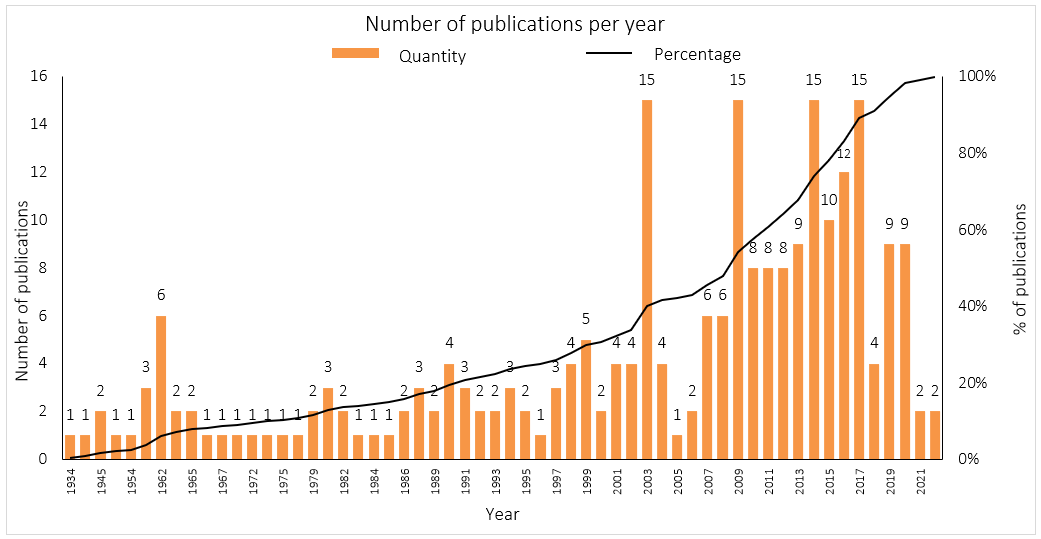
Figura 2. Cantidad de publicaciones por año
Source: Authors’ own work.
These results are plausible if one considers that business history has undergone significant changes due to several administrative reforms while also experiencing a technical revolution, in which mass production boosted business consolidation and growth. This, indeed, has made economists and business managers become increasingly interested in the field of business history and the development of strategies to prevent severe financial crises.
The findings of studies in the field are often disseminated through scientific or technical publications such as articles, books, conference proceedings, and patents, which are considered primary sources of information. In this regard, Figure 3 presents the ten journals with the highest number of publications in the field. As observed, Business History is on the top of the list with 60 publications, followed closely by Business History Review with 38 publications. This information is relevant when it comes to evaluating disparities in terms of coverage across journals.
Moreover, after examining the cumulative percentage of publications per journal, this indicator is found to comply with the Pareto principle—introduced by Vilfredo Pareto in 1896 (
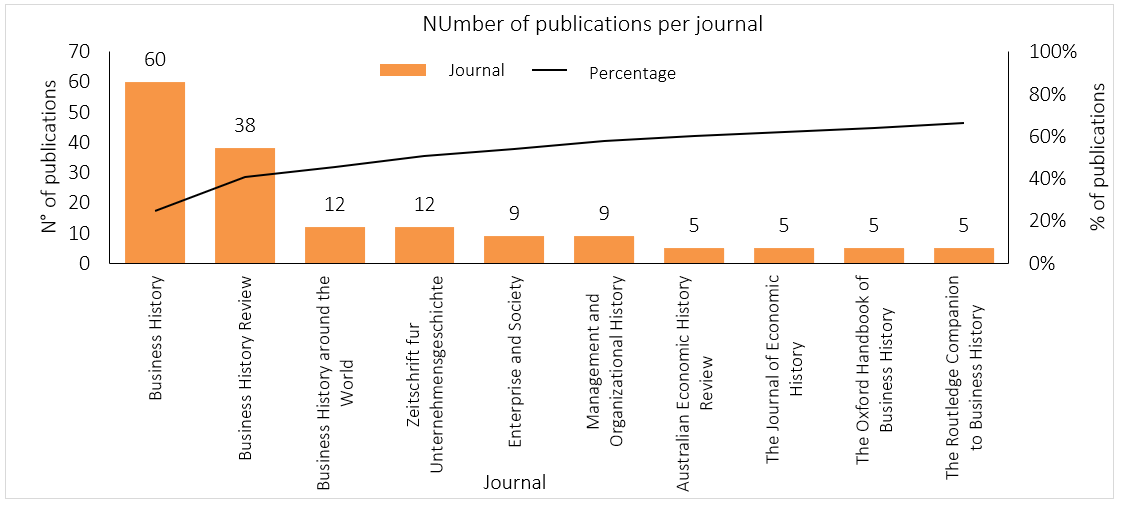
Figura 3. Cantidad de publicaciones por revista
Source: Authors’ own work.
Figure 4 shows the ten authors with the highest number of publications in the field. As can be seen, Jones G. is on the top of the list with 8 publications, followed by Berghoff F. with 6 publications, and Amatori F., Casson M., and Colli A. with 5 publications each. Importantly, as stated by Bordons and Zulueta (1999), the productivity of authors depends on a number of factors that can be divided into two categories: 1) personal traits (e.g., intelligence, perseverance, ability) and 2) authors’ surroundings or context (e.g., influence of prestigious colleagues, ease of obtaining information, discipline in which they work, prestige of the institution to which they belong, financial endowment).
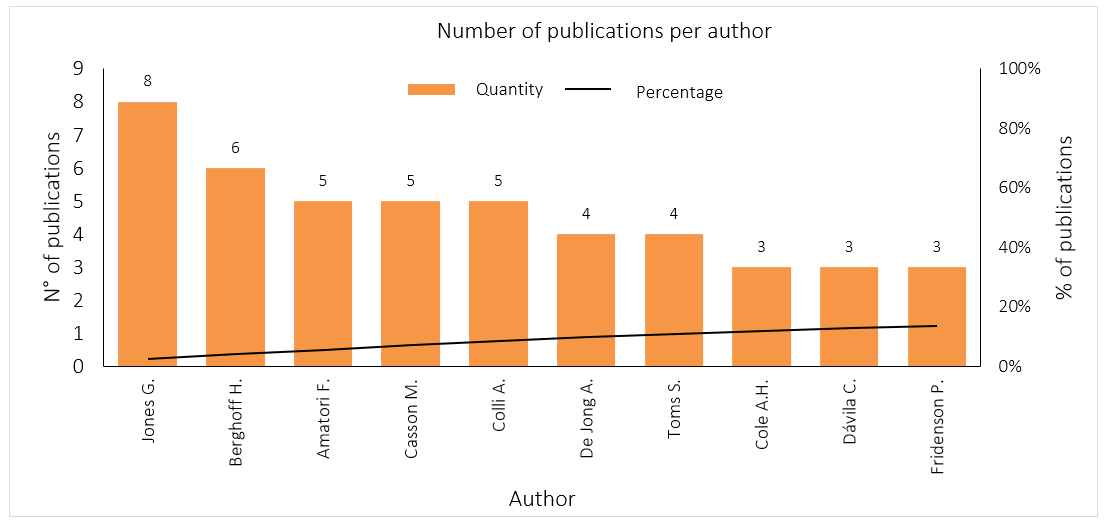
Figura 4. Cantidad de publicaciones por autor
Source: Authors’ own work.
According to the results of the statistical analysis on the number of publications per author, this indicator does not fulfill the Pareto principle, as 64.15% of the 287 authors publish 80% of the articles. Given this situation, the publications were divided into quartiles, and the results showed that 25% of articles are published by 9.43% of authors; 50%, by 26.77% of authors; and 75%, by 55.35% of authors. Thus, it may be concluded that there is an equitable distribution of articles per author, which prevents the concentration of publications on a single author.
Regarding the most productive institutions in the field, Figure 5 presents the ten universities with the highest number of publications (of the 160 that report publications in Scopus), which account for 22.98% of the total production. As seen, Harvard University and Harvard Business School are on the top of the list, with 12 publications each, followed by the University of Reading and Universita Bocconi, with 10 publications each. Copenhagen Business School is in third place, with 9 publications.
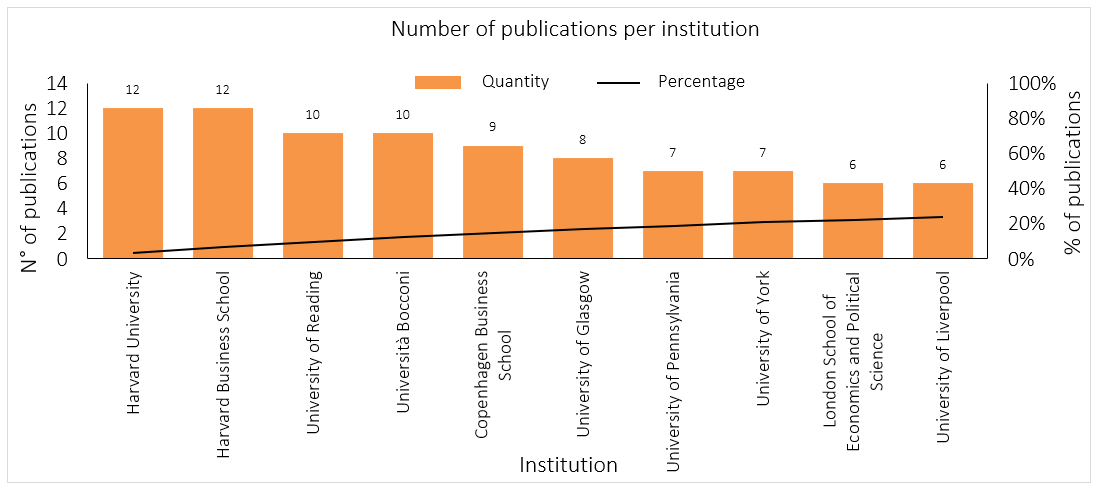
Figura 5. Cantidad de publicaciones por institución
Source: Authors’ own work.
Based on the statistical analysis, 60% of the 160 institutions that report publications in the field produce 80% of the articles. This confirms that this indicator does not comply with the Pareto principle. Hence, as in the previous case, the percentage of universities was divided into quartiles, and the results revealed that 6.88% of the institutions publish 25% of the articles; 20.63%, 50% of the articles; and 50%, 75% of the articles. Finally, 78.13% of the institutions were found to have two or fewer publications, which translates into a suitable dispersion of knowledge.
Furthermore, the bibliometric analysis revealed that there are 29 countries with publications on the matter, of which 27.59% produce 80% of the total publications. This suggests that this indicator is within the acceptable limits to comply with the Pareto principle. As observed in Figure 6, the United States is the most productive country with 73 publications, followed by the United Kingdom with 55 publications, and Germany with 14 publications. In addition, the ten most productive countries were found to produce 85% of the total publications, and 41.37% of the countries were found to have two or fewer publications. This means that knowledge is not dispersed but rather is evidently concentrated on certain countries. Importantly, the most productive countries in the field of business history are classified as developed, which emphasizes the importance of this discipline.
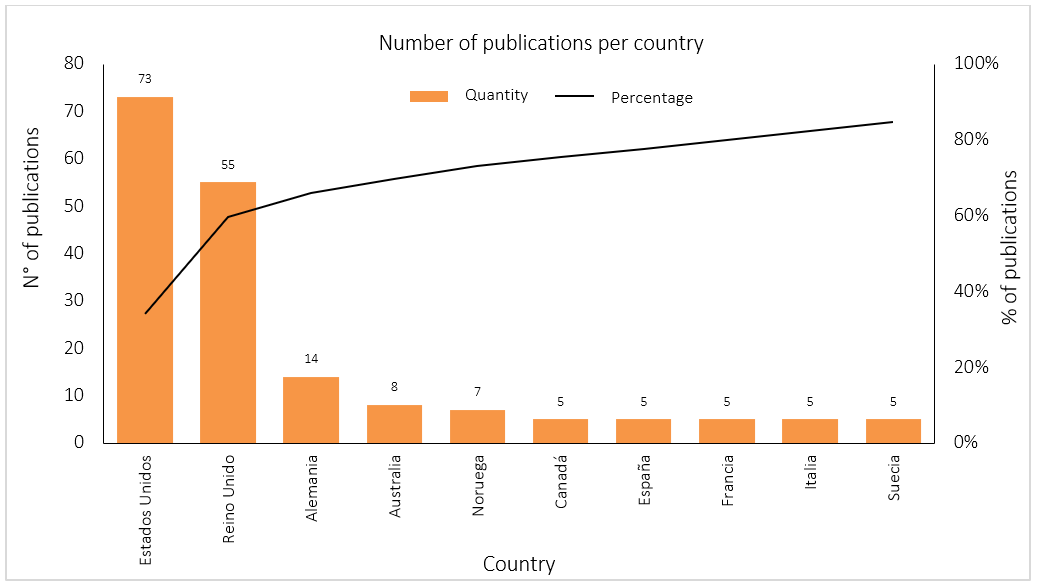
Figura 6. Cantidad de publicaciones por país
Source: Authors’ own work.
Quality indicators
This subsection examines a series of quality indicators, which serve to evaluate the impact of authors, articles, or journals in the field of business history. The proposed analysis does not focus on the quality of the information in the scientific production but rather on the impact of the article in the field (
Figure 7 shows the top ten authors in the field based on the number of citations they have received. With a total of 228 citations, Jones G. is the most cited author, followed by Decker S. with 197 citations, Casson M. with 158 citations, and Toms S. with 149 citations. When the list of the most productive authors (Figure 4) and that of the most cited authors (Figure 7) are compared, four authors—Jones G., Casson M., Colli A., and Toms S.—appear on both lists. This suggests that these authors are the most influential and representative in the field of business history.
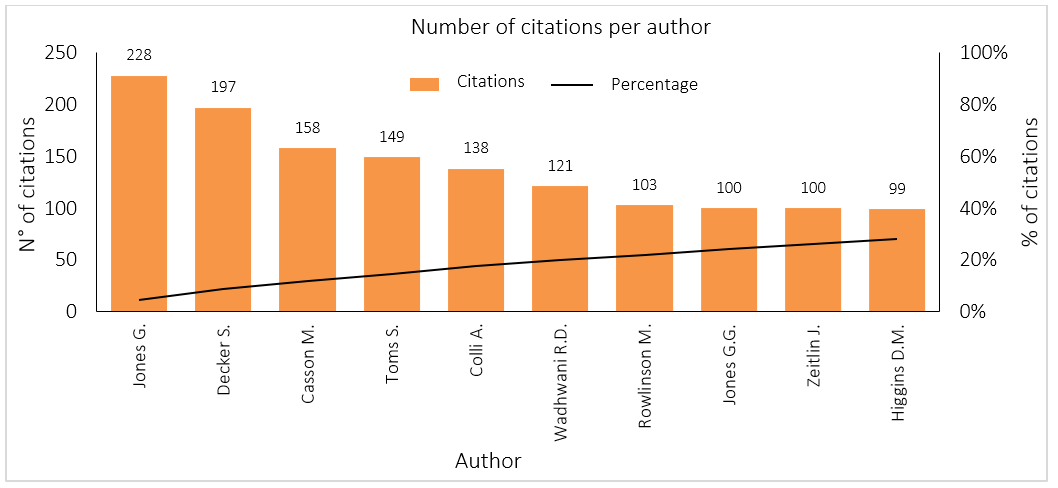
Figura 7. Cantidad de citaciones por autor
Source: Authors’ own work.
Figure 8 presents the ten journals with the most citations per article in the field. As can be seen, Business Review is the journal that tops this list, with an average of 919 citations per publication, followed by Family Business Review with 655 citations per publication, and Management and Organizational History with 238 citations. When comparing this ranking with that of the most productive journals, the Business History, Business History Review, Management and Organizational History, Business History around the World, Enterprise and Society, and The Oxford Handbook of Business History journals appeared in both lists. Thus, it can be concluded that their publications have a significant influence on the transfer of knowledge in the field of business history.
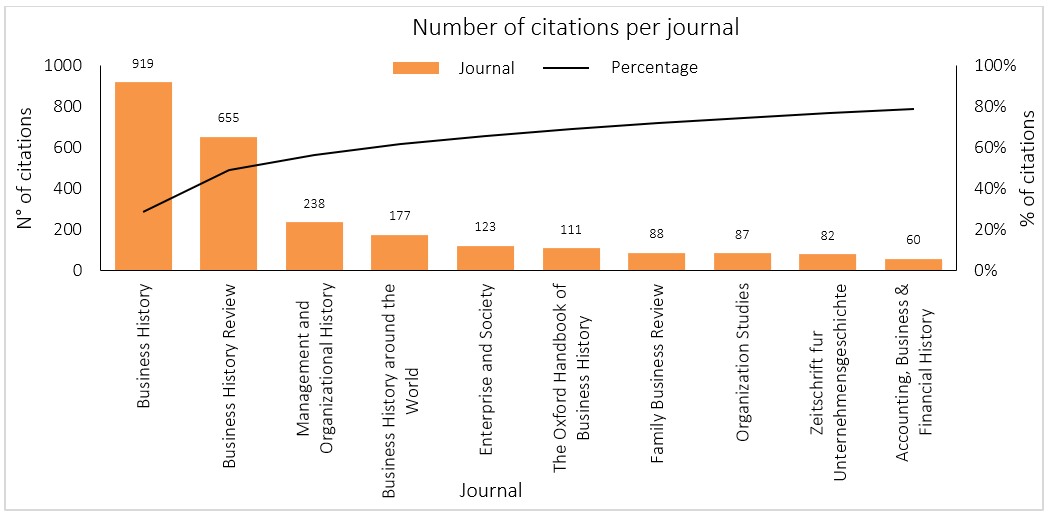
Figura 8. Citaciones por revista
Source: Authors’ own work.
Finally, Figure 9 shows the ten countries with the highest number of citations in the field. As observed, the United Kingdom is the most cited country with 1012 citations, followed by the United States with 967 citations, Denmark with 149 citations, and Italy and Germany with 116 and 115 citations, respectively. When the rankings of the most productive and most cited countries were compared, the United States, the United Kingdom, Italy, Germany, Canada, Australia, France, and Spain appeared in both lists, making them the most representative and influential in the field of business history.
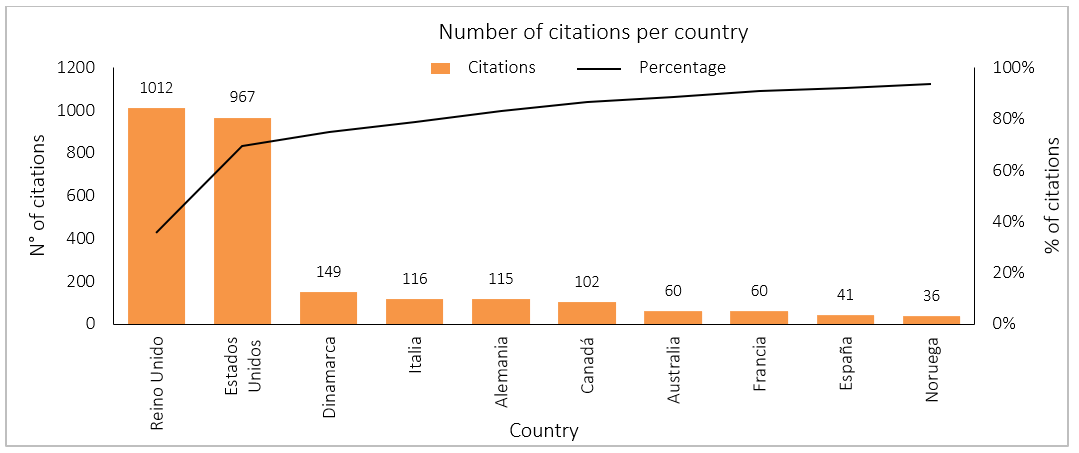
Figura 9. Citaciones por país
Source: Authors’ own work.
5. DISCUSSION
Keyword analysis
This subsection analyzes the trending topics in the field of business history, which were identified based on the estimated bibliometric indicators. The analysis is divided into four parts: keyword analysis, discussion on persistent and frequent topics, the evolution of the field of business history, and proposed research agenda.
For keyword analysis, the frequency of occurrence of each keyword in the 242 selected publications retrieved from Scopus was estimated. Figure 10 shows a Cartesian plane with the most relevant terms in the field of business history, where the x-axis represents the frequency of the keywords, and the y-axis indicates the average year in which they were used. In other words, the frequency of the keywords increases from left to right, with the one that is furthest to the left being the less frequent, and their persistence increases from bottom to top, with the one that is closest to the top being the most emerging.
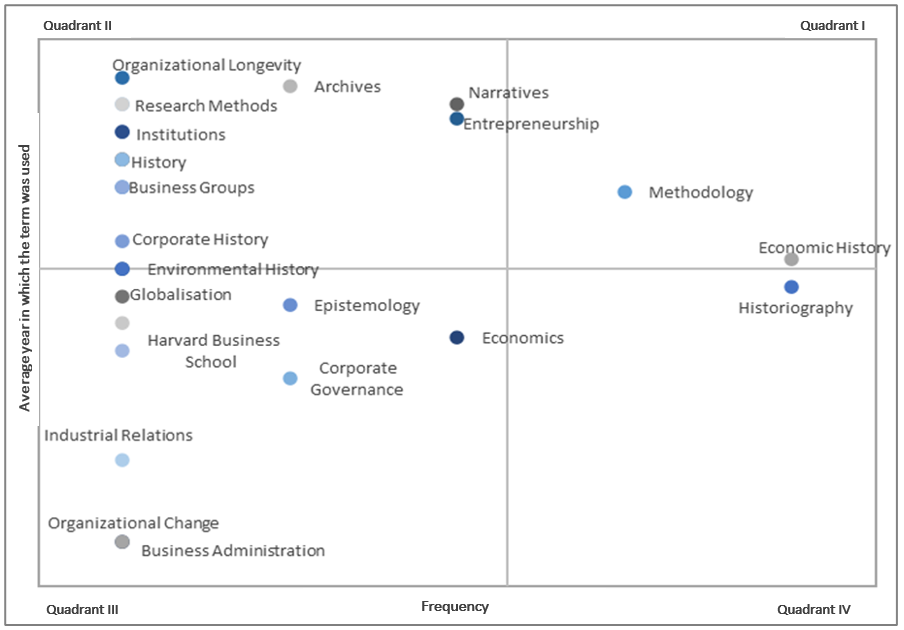
Figura 10. Vigencia y frecuencia de las palabras claves
Source: Authors’ own work.
Quadrant I on the Cartesian plane is considered the most important one. It includes the terms that are not only among the most widely used but also among the most current. In this case, such terms are methodology and economic history, which have, indeed, been the most relevant terms in the field in recent years.
Then, there is Quadrant II, which contains the terms that, although not the most often used now, are among the most recent or emerging terms, that is, those that have recently been the subject of investigations. In this case, such terms are organizational longevity, archives, research methods, institutions, history, business groups, corporate history, narratives, entrepreneurship, and environmental history.
The terms in Quadrant III are those that, on the one hand, do not have a significant impact or relevance in the field due to their low frequency or number of repetitions and, on the other hand, are not among those that have been addressed more frequently in recent years. Therefore, they are not likely to gain much ground in the near future in terms of theoretical or conceptual growth and thus should not represent the research agenda. In this case, some of these terms include globalization, epistemology, Harvard business school, corporate governance, economics, industrial relations, organizational change, and business administration.
Finally, Quadrant IV includes the terms that formerly held a significant place in the body of literature on business history found in Scopus (based on the number of repetitions) but have lost their relevance and prominence in the most recent studies on the subject. In other words, while these concepts served as a foundation for current research and were crucial to understanding the subject in the past, they are not currently concepts that will need to be examined in the near future. In this case, historiography is the only term that appears in this quadrant.
Discussion on persistent and frequent topics
Economic history: On this concept,
For
According to
Methodology: Regarding the studies and methodologies used in research on business history, several authors have recommended business historians to focus on analytical strategies that contribute new knowledge and provide a better way of communicating it to cooperate with social sciences studies (
Entrepreneurship: Over the past four decades, there has been a resurgence of interest in the figure of the entrepreneur and the phenomenon of entrepreneurship in the field of economic theory and business history. In this regard,
Narratives: “Narratives can be defined as the relaying of human experience through accounts that are structured as stories that provide, in sequential order, the meaningful telling of events” (
Business group: “Business groups are an organizational model in which collections of legally independent firms bounded together with formal and informal ties use collaborative arrangements to enhance their collective welfare” (
Evolution of the field of business history
Figure 11 provides a summary of the evolution of the field of business history and shows, in chronological order, the recurrent themes highlighted by the authors over the past years. This summary makes it possible to see how the emphasis of this field has shifted over time and identify the topics that have received more attention in the specialized literature.
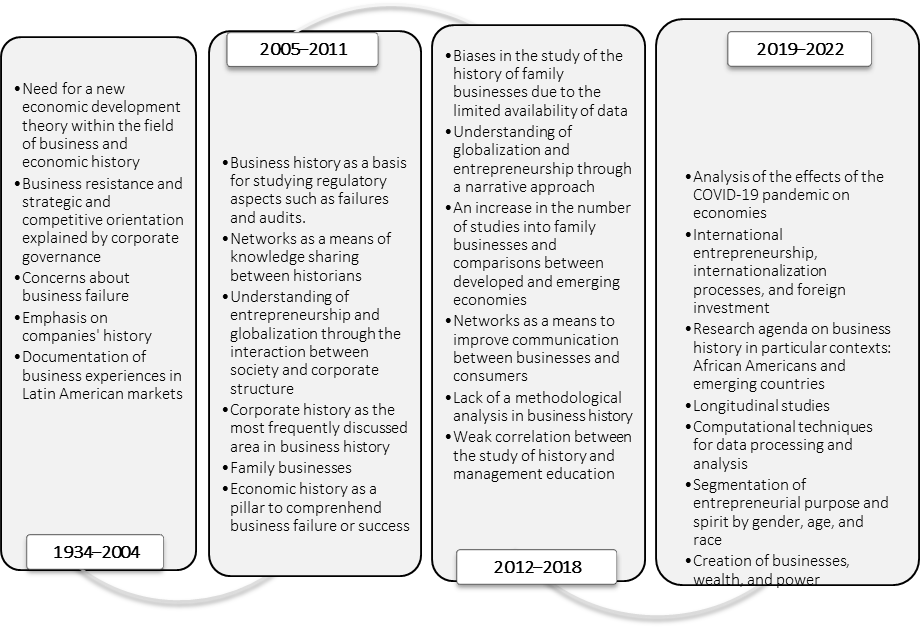
Figura 11. Resumen evolución del campo de la historia empresarial
Source: Authors’ own work.
The period from 1934 to 2004
This period was initially defined by the need to comprehend markets and the changes that must be implemented to face the organizational environment (
The period from 2005 to 2011
Between 2005 and 2008, research in the field focused on government regulations over time, including aspects such as regulatory failures and similar processes such as audits (
Furthermore, networks are demonstrated to be useful in making relevant information available to business historians through its exchange, allowing for the management of real and more accurate information. The studies in the field also turned their attention to family businesses, which became a key topic for historians to address issues regarding company positioning and growth and the new challenges of the time (
The period from 2012 to 2018
From 2012 to 2014, research in the field focused on the biases present in the study of family businesses due to entrepreneurs’ resistance to sharing information about their businesses, which made data scarce and made this area difficult to study. Another aspect that was considered during this period was the understanding of entrepreneurship and globalization through a narrative approach to business history, as these fields were promising areas for future studies. Also, researchers in the field analyzed how economic history had grown all over the world, particularly in Latin America, which is seen as a challenging task given the region’s diversity and the large number of countries that make it up.
From 2015 to 2018, studies highlighted the relevance of networks in improving communication between organizations and consumers, which, in turn, helps understand consumers’ thinking and market dynamics over time (
The period from 2019 to 2022
During this period, research in business history considers the use of digital sources, as the modern era provides historical narratives with a new voice. In addition, most of the digital tools are already well-established in linguistics and computer science, which enriches the methodological development of the studies in the field (
Recent studies have also tried to understand countries’ research agendas on business history in contexts like emerging nations and African American businesses, paving the way for various economic, political, and social contributions other than those focused on racial inequalities and slavery (
Proposed research agenda
In order to provide scholars with a guide for upcoming studies, this subsection presents a series of business history-related considerations, which were covered in this bibliometric analysis based on the publications retrieved from Scopus.
-
There are few studies into the changes and impacts endured by the economies as a result of the crisis brought on by the COVID-19 pandemic. Thus, it is critical to analyze and continue investigating such aspects, given their effects on the productive structures in the Latin American and Caribbean countries, which have exposed the weaknesses accumulated over the years.
-
There is little emphasis on business history in management curricula. Hence, since it has been demonstrated that it offers advantages in various analyses, it is crucial to continue studying its significance, possible approaches, and methods of dissemination in educational settings.
-
Business creation and entrepreneurship are important topics that must be maintained but also diversified using methods that are more in line with social realities. For instance, women’s roles have become more relevant in the modern era, making it essential to assess their performance in these contexts through gender studies, as well as to encourage their participation.
-
Informality is another subject that needs to be thoroughly researched. In fact, some developing countries like Colombia lack an appropriate source to measure this phenomenon at the company level, which has diminished its significance in commercial systems. It is, therefore, important to design new tools for gathering this information and identify the key factors in the survival of this type of business.
-
Networks and business groups are crucial in supplying datasets that enable historians to conduct their studies using more comprehensive and trustworthy data. As noted by various authors, these networks are a key information source that aids in the analysis of business failure and success stories. Thus, it is advisable to consider the networks that may exist between businesses, historians, and other relationships in studies related to these topics.
-
Different authors have mentioned that the lack of a clear definition of economic development has led to limitations in business history studies. Thus, to have a qualitative approach and better understand the historical experiences of economic growth and income in the world’s economies, it is wise to further study the causes and difficulties that have prevented a clear definition of the concept.
-
As a result of climate change and global warming, environmental history continues to be a popular topic that seems to be getting stronger over time. Considering this, it is now essential to investigate the negative effects that certain human activities have had on the environment to reduce them and create more environmentally friendly business models.
-
In line with the previous consideration, the technological revolution also transformed the interaction between commercial systems and related research methodologies. Hence, it is recommended to use digital tools to strengthen the resources available in business history and thus bridge the knowledge gap with digital history and enable reflection on the new methodological implications of the field.
6. CONCLUSIONS
This study made it possible to identify research trends and developments in the field of business history. To this end, a bibliometric analysis was carried out using the scientific production indexed in Scopus between 1934 and 2022. Methodology and economic history were found to be the most common topics these days. Similarly, organizational longevity, archives, research methods, institutions, history, business groups, corporate history, narratives, entrepreneurship, and environmental history were among the currently emerging terms.
Researchers are increasingly interested in business history, which has led to a growing number of publications on this topic. However, many approaches remain to be addressed, which is why this study proposes possible lines of research, such as the importance of business history in educational institutions, informality, the impact of COVID-19, business networks and clusters, digital and computational tools, and analysis of historical data.
Regarding the quantity indicators, it was found that the publications per journal indicator complied with the Pareto principle. It can be inferred, therefore, that there are journals specialized in business history because a few journals accounted for a large number of publications in this field. In addition, and also complying with the Pareto principle, it was observed that academic production on this topic is concentrated on a few countries, with the United States and the United Kingdom being the most prominent. Nevertheless, as evidenced in the literature review, interest in this field has been expanding in recent years to different regions and countries. The cumulative number of publications per author, however, did not comply with the Pareto principle, which means that many researchers have published on business history.
Methodology has been a matter of debate in business history studies because various authors propose different research approaches and express criticism and concern about other methodologies. This leads to the coexistence of different research methodologies that might differ from each other. It is, therefore, necessary to develop and adopt a methodological approach, accepted by the scientific community, that maximizes the impact of the efforts made and the studies conducted on the generation of knowledge about business history.
With respect to the evolution of the business history field, numerous topics have been addressed throughout the years, which demonstrates the breadth of the area and the multiple approaches to be studied. Originally, the topics were centered on the need for an economic development theory within economic and business history; then the focus shifted to corporate history. However, in recent years, researchers have shown interest in networks to improve communication between organizations and consumers, internationalization, and the effects of COVID-19 on companies.
This study also revealed that the most productive years do not have the greatest impact on the literature, which can be explained by the dispersion of knowledge and delayed dissemination. However, this assertion requires a more detailed study in order to find the correlation between productivity and the impact of scientific production on business history. Consequently, further studies about emerging economies, the impact of the articles mapped so far on productivity, among other topics, would be useful to fill some gaps in scientific production and broaden this research area.
Finally, one of the main limitations of this bibliometric analysis is that only one database was considered, which leaves out of the analysis recently indexed journals and journals from other databases, thus reducing the amount of information examined. Another limitation is that using structured search strings may leave out unpublished articles or articles published in lower-quality journals or events, as well as grey literature on the topic. Lastly, the language of the publications is another limitation because the main scientific databases include literature mostly from developed countries.
CONFLICT OF INTEREST
The authors declare that they have no financial, professional, or personal conflicts of interest that could inappropriately influence the obtained results or the proposed interpretations.
AUTHOR CONTRIBUTIONS
All the declared authors participated in the elaboration of all the sections of this article.
REFERENCES
- arrow_upward Almaraz Alvarado, A. (2020). Perdurability, families, and internationalization processes: approaches from business history in Latin America. Journal of Evolutionary Studies in Business, 5(2), 1–32. https://doi.org/10.1344/JESB2020.2.J075
- arrow_upward Álvaro-Moya, A., & Donzé, P.-Y. (2016). Business History and Management Studies. Journal of Evolutionary Studies in Business-JESB, 1(1). https://doi.org/10.1344/jesb2016.1.j008
- arrow_upward Atkinson, B. (2021). Explaining wealth inequality: Property, possession and policy reform. Routledge, Ed. Taylor and Francis.
- arrow_upward Austin, G., Dávila, C., & Jones, G. (2017a). The Alternative Business History: Business in Emerging Markets. Business History Review, 91(3), 537–569. https://doi.org/10.1017/S0007680517001052
- arrow_upward Austin, G., Dávila, C., & Jones, G. (2017b). Emerging Markets and the Future of Business History. In Harvard Business School General Management Unit. https://doi.org/10.2139/SSRN.3012606
- arrow_upward Barbero, M. (2008). Business history in Latin America: a historiographical perspective. Business History Review, 82(3), 555–575. https://doi.org/https://doi.org/10.1017/S0007680500082647
- arrow_upward Bordons, M., & Zulueta, M. Á. (1999). Evaluación de la actividad científica a través de indicadores bibliométricos. Revista Española de Cardiología, 52(10), 790–800.
- arrow_upward Bracker, J. (1980). The Historical Development of the Strategic Management Concept. The Academy of Management Review, 5(2), 219–224. https://doi.org/10.5465/AMR.1980.4288731
- arrow_upward Bratton, W. W. (1989). The New Economic Theory of the Firm: Critical Perspectives from History. Stanford Law Review, 1471–1527. https://www.jstor.org/stable/1228806
- arrow_upward Camillus, J. C. (2016). The wicked challenge of the business environment. International Journal of Business Environment, 8(1), 19-31. https://doi.org/10.1504/IJBE.2016.074792
- arrow_upward Camps, D. (2008). Limitaciones de los indicadores bibliométricos en la evaluación de la actividad científica biomédica. Colombia Médica, 39(1), 74–79.
- arrow_upward Cardona-Montoya, J. C. (2022). Mercado Integrado Latinoamericano: diez años después de su creación. Un análisis bibliométrico para el periodo 2008-2021. Revista CEA, 8(16), 2422–3182. https://doi.org/10.22430/24223182.1863
- arrow_upward Chandler, A. (1962). Strategy and Structure: Chapters in the History of the American Industrial Enterprise. Beard Books. http://books.google.com/books?id=mKfjhPZTkB8C&pgis=1
- arrow_upward Chandler, A. (1977). The visible hand: the managerial revolution in American business. Hardvard University Press. https://www.hup.harvard.edu/catalog.php?isbn=9780674940529
- arrow_upward Chandler, A. (1990). Scale and Scope: Dynamics of Industrial Capitalism. Harvard University Press, The Belknap Press.
- arrow_upward Chatziioannou, M. C. (2019). Contextualizing twentieth century business life histories: The cases of Papastratos and Katsambas. L’Atelier Du Centre de Recherches Historiques, 21, 1–16. https://doi.org/10.4000/ACRH.9966
- arrow_upward Clark, P., & Rowlinson, M. (2004). The Treatment of History in Organisation Studies: Towards an ‘Historic Turn’? Business History, 46(3), 331–352. https://doi.org/10.1080/0007679042000219175
- arrow_upward Claus, P., & Marriott, J. (2017). History: An Introduction to Theory, Method and Practice (2nd ed.). Routledge.
- arrow_upward Coleman, D. C. (1992). New business history for old? The Historical Journal, 35(1), 239–244. https://doi.org/10.1017/S0018246X00025723
- arrow_upward Colli, A. (2011). Business history in family business studies: from neglect to cooperation? Journal of Family Business Management, 1(1), 14–25. https://doi.org/10.1108/20436231111122254
- arrow_upward Colli, A., & Larsson, M. (2014). Family business and business history: An example of comparative research. Business History, 56(1), 37–53. https://doi.org/10.1080/00076791.2013.818417
- arrow_upward Colpan, A. M., & Cuervo-Cazurra, A. (2018). Business Groups as an Organizational Model. Oxford University Press. https://doi.org/10.1093/acrefore/9780190224851.013.97
- arrow_upward da Silva, Í., & Cavalcante dos Santos, E. (2022). On history, business, and management: a review of the literature and research agenda. Revista de Administração Da UFSM, 15(1), 177–199. https://doi.org/10.5902/1983465966159
- arrow_upward da Silva, T., Casson, M., & Jones, G. (2019). Organizational innovation in the multinational enterprise: Internalization theory and business history. Journal of International Business Studies, 50(8). https://doi.org/10.1057/s41267-018-0156-6
- arrow_upward Dahlén, M., & Larsson, M. (2014). Business history and legal history. Business History, 56(1), 54-70. https://doi.org/10.1080/00076791.2013.818416
- arrow_upward Dávila, C. (2013). The Current State of Business History in Latin America. Australian Economic History Review, 53(2), 109–120. https://doi.org/10.1111/aehr.12006
- arrow_upward Dávila, C., & Miller, R. (1999). Business History in Latin America: The Experience of Seven Countries. Liverpool University Press.
- arrow_upward De Jong, A. (2022). Research in business history: From theorising to bizhismetrics. Australian Economic History Review, 62(1), 66–79. https://doi.org/10.1111/aehr.12221
- arrow_upward Decker, S., Kipping, M., & Wadhwani, R. D. (2015). New business histories! Plurality in business history research methods. Business History, 57(1), 30–40. https://doi.org/10.1080/00076791.2014.977870
- arrow_upward Divall, C. (2012). Business history, global networks and the future of mobility. Business History, 54(4), 542–555. https://doi.org/10.1080/00076791.2011.631126
- arrow_upward Doležalová, A. (2017). Business history. The scientific discipline between history and economics. Cesky Casopis Historicky, 115(3), 708–730.
- arrow_upward Eloranta, J., Nevalainen, P., & Ojala, J. (2020). Towards Big Data: Digitising Economic and Business History. In M. Fridlund., M. Oiva., P. Paju (Eds.), Digital Histories: Emergent Approaches within the New Digital History. https://doi.org/10.33134/HUP-5
- arrow_upward Faria, A., & Cunha, J. F. (2022). Decolonizing business history: the case of Unilever historiography. Cadernos EBAPE.BR, 20(1), 118–134. https://doi.org/10.1590/1679-395120210001
- arrow_upward García Ruiz, J. L. (1994). Historia económica de la empresa moderna. Ediciones AKAL.
- arrow_upward Gelderblom, O., & Trivellato, F. (2019). The business history of the preindustrial world: Towards a comparative historical analysis. Business History, 61(2), 225–259. https://doi.org/10.1080/00076791.2018.1426750
- arrow_upward Geoffrey, J., & Friedman, W. (2017). Debating Methodology in Business History. Business History Review, 91(3), 443–455. https://doi.org/10.1017/S0007680517001088
- arrow_upward Gómez, C. J., & Castrillón, L. F. (2016). Impact of business history in the programs of management degree. Espacios, 37(11).
- arrow_upward Hall, C. M. (2011). Publish and perish? Bibliometric analysis, journal ranking and the assessment of research quality in tourism. Tourism Management, 32(1), 16–27. https://doi.org/10.1016/J.TOURMAN.2010.07.001
- arrow_upward Hernández Romo, M. (2006). Los Estudios Empresariales en América Latina: Balance y alternativas de análisis. In E. De La Garza (Ed.), Teorías sociales y estudios del trabajo: Nuevos enfoques (pp. 108-129). Anthropodos Editorial.
- arrow_upward Hounshell, D. A. (2008). Hughesian history of technology and Chandlerian business history: Parallels, departures, and critics. History and Technology, an International Journal, 12(3), 205–224. https://doi.org/10.1080/07341519508581885
- arrow_upward Hyde, F. E. (1963). British Business History: A Review of Recent Books. The Business History Review, 37(3), 240–250. https://doi.org/10.2307/3112236
- arrow_upward Jones, G. (2019). Company History and Business History in the 1990s. In W. Feldenkirchen; T Gourvish (Eds.), European Yearbook of Business History, 1–20. https://doi.org/10.4324/9780429399527-1
- arrow_upward Карас, M. (2018). Investment arbitration and Latin America: analysing recent trends and past challenges. Moldavian Journal of International Law and International Relations, 13(3–4), 169-175. http://www.usem.md/md/p/rmdiri
- arrow_upward Kivijärvi, M., Mills, A. J., & Mills, J. H. (2018). Performing Pan American Airways through coloniality: an ANTi-History approach to narratives and business history. Management and Organizational History, 14(1), 33-54. https://doi.org/10.1080/17449359.2018.1465825
- arrow_upward Kobrak, C., & Schneider, A. (2011). Varieties of business history: Subject and methods for the twenty-first century. Business History, 53(3), 401–424. https://doi.org/10.1080/00076791.2011.565515
- arrow_upward Kumar, K. (2014). Reviving business history in India - The way forward. IIMB Management Review, 26(1), 65–73. https://doi.org/10.1016/j.iimb.2014.01.010
- arrow_upward Lamoreaux, N. R., Raff, D. M. G., & Temin, P. (2009). Economic Theory and Business History. In G. Jones, J. Zeitlin (Eds.), The Oxford Handbook of Business History. Oxford University Press. https://doi.org/10.1093/OXFORDHB/9780199263684.003.0003
- arrow_upward Larsson, M., Magnusson, L., & Ullenhag, K. (2014). Scholarship in business history. Business History, 56(1), 1–4. https://doi.org/10.1080/00076791.2013.818420
- arrow_upward Lepore, A. (2012). New research methods of business history.
- arrow_upward Lluch, A., & Fernández, P. (2019). Teaching entrepreneurial families and family business history in Latin America 1870s-2017. Asociación Española de Historia Económica.
- arrow_upward Lluch, A., Monsalve, M., & Bucheli, M. (2021). Historia empresarial en América Latina: temas, debates y problemas. Fondo Editorial Universidad del Pacífico.
- arrow_upward Logan, T. D. (2022). American Enslavement and the Recovery of Black Economic History. Journal of Economic Perspectives, 36(2), 81–98. https://doi.org/10.1257/JEP.36.2.81
- arrow_upward Montiel, O. J., & Alvarado, A. A. (2022). The Emerald Handbook of Entrepreneurship in Latin America. Emerald Publishing Limited. https://doi.org/10.1108/978-1-80071-955-220221032
- arrow_upward Mordhorst, M., & Schwarzkopf, S. (2017). Theorising narrative in business history. Business History, 59(8), 1155–1175. https://doi.org/10.1080/00076791.2017.1357697
- arrow_upward Nawijn, F., Ham, W. H. W., Houwert, R. M., Groenwold, R. H. H., Hietbrink, F., & Smeeing, D. P. J. (2019). Quality of reporting of systematic reviews and meta-analyses in emergency medicine based on the PRISMA statement. BMC Emergency Medicine, 19(1), 1–8. https://doi.org/10.1186/s12873-019-0233-6
- arrow_upward Nix, A., & Decker, S. (2021). Using digital sources: the future of business history? Business History, 1–24. https://doi.org/10.1080/00076791.2021.1909572
- arrow_upward Norris, M., & Oppenheim, C. (2007). Comparing alternatives to the Web of Science for coverage of the social sciences’ literature. Journal of Informetrics, 1(2), 161–169. https://doi.org/10.1016/j.joi.2006.12.001
- arrow_upward Ojala, J. (2017). The revival of economic history and the emergence of business history. Historiallinen Aikakauskirja, 4, 446–456.
- arrow_upward Ojala, J., Eloranta, J., Ojala, A., & Valtonen, H. (2017). Let the best story win – evaluation of the most cited business history articles. Management & Organizational History, 12(4), 305–333. https://doi.org/10.1080/17449359.2017.1394200
- arrow_upward Pareto, V. (1896). Cours d’économie politique. Université de Lausanne.
- arrow_upward Petit Primera, J. G. (2013). La teoría económica del desarrollo desde Keynes hasta el nuevo modelo neoclásico del crecimiento económico. Revista Venezolana de Análisis de Coyuntura, 19(1), 123–142.
- arrow_upward Plumpe, W. (2016). German Economic and Business History in the 19th and 20th Centuries. Palgrave Macmillan UK.
- arrow_upward Ratten, V. (2022). Analyse, Ideate and Grow: The Role of Creativity and Entrepreneurship. In Analyse, Ideate and Grow. Springer Nature Singapore. https://doi.org/10.1007/978-981-19-0890-3
- arrow_upward Reber, V. (1985). Archival Sources for Latin American Business History. Business History Review, 59(4), 670–679. https://doi.org/10.2307/3114600
- arrow_upward Regalski, A. (2022). Los recorridos de la historiografía económica argentina a través de cuatro décadas de Jornadas de Historia Económica. Prohistoria, Historia, políticas De La Historia, (37), 1–34. https://doi.org/https://doi.org/10.35305/prohistoria.vi37.1615
- arrow_upward Rollings, N. (2021). The Vast and Unsolved Enigma of Power: Business History and Business Power. Enterprise and Society, 22(4), 893–920. https://doi.org/10.1017/eso.2021.53
- arrow_upward Romero Ibarra, M. E. (2003). La historia empresarial. Historia Mexicana, 52(3), 806–829. http://www.redalyc.org/articulo.oa?id=60052306
- arrow_upward Rowlinson, M., Hassard, J., & Decker, S. (2014). Research Strategies for Organizational History: A Dialogue Between Historical Theory and Organization Theory. Academy of Management Review, 39(3), 250–274. https://doi.org/10.5465/AMR.2012.0203
- arrow_upward Salas, V. (2012). Fundamentos económicos de la administración de empresas. ¿Es necesaria una revisión? RAE: Revista Asturiana de Economía, (46), 121-137. https://dialnet.unirioja.es/servlet/articulo?codigo=4204254
- arrow_upward Schumpeter, J. A. (1947). The Creative Response in Economic History. The Journal of Economic History, 7(2), 149–159. https://ideas.repec.org/a/cup/jechis/v7y1947i02p149-159_05.html
- arrow_upward Shang, Y., Li, H., & Zhang, R. (2021). Effects of Pandemic Outbreak on Economies: Evidence From Business History Context. Frontiers in Public Health, 9, 1–12. https://doi.org/10.3389/fpubh.2021.632043
- arrow_upward Sharp, K. K. (2020). Current trends in African American business history of the nineteenth and twentieth centuries: Recent historiography and applications of the field. History Compass, 18(1), e12604. https://doi.org/10.1111/HIC3.12604
- arrow_upward Sluyterman, K. (2014). Business History versus Economic History in the twentieth century. The Low Countries Journal of Social and Economic History, 11(2), 45–64.
- arrow_upward Søderberg, A.-M. (2003). Sensegiving and sensemaking in an integration process. In C. Barbara, P. Gagliardi (Eds.), Narratives We Organize (pp. 3–35). John Benjamins Publishing Company. https://doi.org/10.1075/aios.11.03sod
- arrow_upward Szmrecsanyi, T., & Topik, S. (2004). Business History in Latin America. Enterprise & Society, 5(2), 179–186.
- arrow_upward Tortella, G. (1998). Los nuevos caminos de la historia económica. América Latina en la Historia Económica. América Latina En La Historia Económica, 5(9), 85–98.
- arrow_upward Tucunduva, T., Sousa, J. F., Quirino, G., Storopoli, J. E., Liu, A., & Yigitcanlar, T. (2022). Understanding Sustainable Energy in the Context of Smart Cities: A PRISMA Review. Energies, 15(7), 2382. https://doi.org/10.3390/en15072382
- arrow_upward Vargas-González, C., y Toro-Jaramillo, I. D. (2022). La confianza en las organizaciones: reflexión sobre su sentido y alcance. Revista CEA, 8(18), e2149. https://doi.org/10.22430/24223182.2149
- arrow_upward Vasilev, A., & Gesheva, N. (2017). Revisiting the ‘invisible hand’ hypothesis: a comparative study between Bulgaria and Germany. Eastern Journal of European Studies, 8(1), 45-77. http://ejes.uaic.ro/articles/EJES2017_0801_GES.pdf
- arrow_upward Villa, E., Ruiz, L., Valencia, A., & Picón, E. (2018). Electronic commerce: factors involved in its adoption from a bibliometric analysis. Journal of Theoretical and Applied Electronic Commerce Research, 13(1), 39–70. https://doi.org/10.4067/S0718-18762018000100104
- arrow_upward Wadhwani, R. D., & Lubinski, C. (2017). Reinventing Entrepreneurial History. Business History Review, 91(4), 767–799. https://doi.org/10.1017/S0007680517001374
- arrow_upward Warwick, W. (1994). A review of AT&T’s business history in China: The memorandum of understanding in context. Telecommunications Policy, 18(3), 265–274. https://doi.org/10.1016/0308-5961(94)90082-5
- arrow_upward Yemelyanov, A. (2019). Privileges in the economy of the leading East Asian Countries in the 19th-21st centuries: evolution of state regulation and legislative consolidation. Economic Annals-XXI, 180(11-12), 12-20. https://doi.org/10.21003/ea.V180-02

